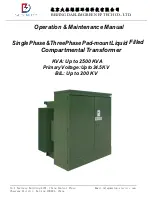
PART ONE - INTRODUCTION
SECTION 1 - GENERAL INFORMATION
PRO-series Model C3 Conductivity Transmitter
Rev. 0-201
14
1.2 Transmitter Safety
1.3 Retained
Configuration Values
1.4 Transmitter
Serial Number
1.5 EMI/RFI Conformance
The transmitter is completely safe to handle. Only low DC
voltage is present.
WARNING:
ALWAYS LOCATE THE TRANSMITTER IN A SAFE
AREA. IT IS NOT DESIGNED INTRINSICALLY SAFE.
All user-entered configuration values are retained indefi-
nitely, even if power is lost or turned off. The non-volatile
transmitter memory does not require battery backup.
A label with the transmitter model number, serial number,
and build date is located on its enclosure.
The transmitter is designed to provide protection from most
normally encountered electromagnetic interference. This
protection exceeds U.S. standards and meets European
IEC 801-series testing for electromagnetic and radio fre-
quency emissions and susceptibility. Refer to Figure 1-1
and the specifications in Section 2.1 for more information.
EMISSIONS
SUSCEPTIBILITY
FIGURE 1-1 EMI/RFI Immunity Diagram















































